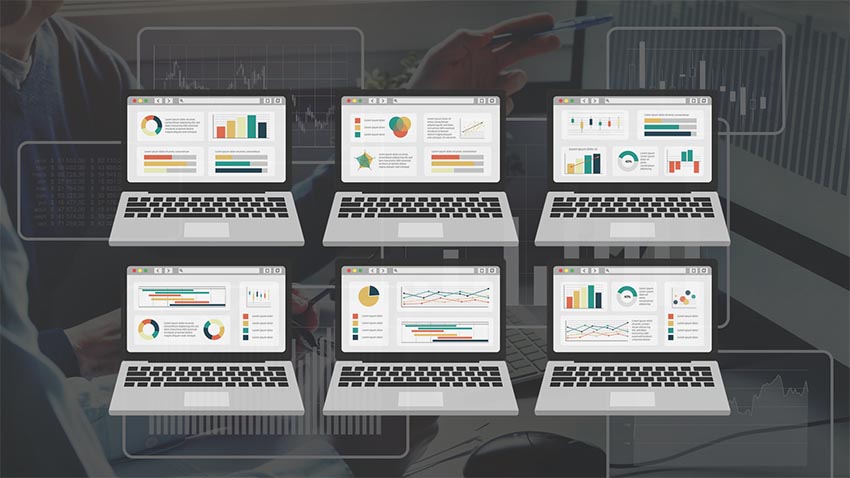smartFAB has developed an Automated Industrial Data Analytics solution designed to meet the needs of manufacturers, independently of their size, sector and type of production. The company’s aim is to allow producers to extract more value from their data without having to rely on an in-house team of experts or costly tailor-made solutions, thus empowering operators to take data-oriented decisions at speed.
smartFAB’s platform’s tools include automated data analytics addressing anomaly detection and production optimization problems, as well as digital lean tool. The system leverages machine learning and artificial intelligence to connect the data across traditionally disjoint silos, transforming it into easy-to-read insights.
Interview with Alessandra Pennuto, COO at smartFAB
Easy Engineering: Which are your most requested tools?
Alessandra Pennuto: The digital lean manufacturing tool is among the most sought-after features in our system, it allows producers to better understand the problems on their lines, detect bottlenecks, monitor changes and keep track of improvements through useful analyses relating for example to Cycle or Process Time. Manufacturers value this tool for its ability to enhance production efficiency and reduce waste.
Our optimization tool has also been among the most requested, especially by producers which constantly need to adapt to rapid changes in market conditions. It helps operators better understand the potential and the constraints on their production lines, allowing them to explore different production scenarios without having to physically test them. It has gained traction due to its immediate impact on improving operational processes, solving problems such as finding the best scheduling order for products to be put into production.
E.E: What are clients looking for when they approach your solution?
A.P: Clients seek reliability, scalability, and ease of integration. They want solutions that seamlessly fit into their manufacturing environments and provide tangible, immediate return on investment. We understand this urgency and initiate a project only in light of real production problems that could be solved through our tools. If a company approaches us in the early stage of its digitalisation process, we often partner with other solution providers to support the correct collection of data.

We also understand the pressure posed on the manufacturing sector to meet production goals while simultaneously be more sustainable, we therefore provide them with the tools to reduce their wastes and their energy consumption, make better use of their resources and reduce carbon emissions.
Finally, SMEs or large companies not having a structured innovation or IT department want to be able to rely on a responsive customer support. We guide our clients through the entire process, from tailored workshops, to understanding their major pain points and the best tools to address them, to in-house training sessions to effectively use our platform and robust technical support in case of specific issues.
E.E: On which aspects should clients focus when deciding to buy the solution?
A.P: Clients should focus on how a solution aligns with their production challenges and goals, bringing people with different roles and competences to the table to understand their different point of views on the implementation of a technological solution.
They should also evaluate their data collection practices to understand if they are robust enough for the type of analysis they would like to carry out; we are ready to help them in gaining more clarity under this point of view.
Finally, it’s important for them to understand the potential of the solution to deliver measurable improvements, whether they are in efficiency, quality, or sustainability.
E.E: Tell us a short buying guide for clients who want to purchase your products/solutions?
A.P:
- Identify specific manufacturing challenges and goals.
- Evaluate how our tools align with these needs.
- Understand who will be the end users of the solution and who will be responsible for the successful implementation of the solution.
- Request a demonstration or a more structured workshop to understand what use can be made of the data, possibly involving different stakeholders within the company.
- Calculate the potential return on investment.
- Engage with our team to discuss integration of our solution and technical support when it comes to deployment.

E.E: What should clients know when they plan to expand the usage of an existing solutions?
A.P: The use of an already implemented tool can often be extended to other production lines, perhaps in different factories. In this case it’s important to ensure alignment with local management to ensure that the innovation is welcomed by end users.
After testing our solution on a production line, our clients often gain a better understanding of how different analytics can solve different problems, they understand what problems they can solve with the data they have and can improve their data collection practices.
When expanding the use to more tools to solve different production problems, clients should assess the potential benefits and how this will align with long-term business objectives and external market conditions.
E.E: Why do clients choose your solution over others existing on the market?
A.P: Clients choose our solution because we offer a unique combination of cutting-edge technology, deep industry expertise, and a commitment to addressing the specific pain points of manufacturers by iusing only the most appropriate tool to solve them.
Our tools are designed to deliver rapid, measurable improvements and have proved to reduce cost and time to insights by at least 80%, reduce waste by at least 30% and increment efficiency by at least 20%.
E.E: What sets your solution apart and what features do they have?
A.P: Our system stands out as it:
- Leverages AI to break down data silos and automates the data science workflow. Unlike other solutions which require manual work, our system carries out a complete and automated analysis of the data. No extra time and cost for new insights.
- Contextualises and classifies insights based on impact on production to focus on the problems that matter the most. The data is not visualized through a static dashboard, but it is presented with a storytelling method to facilitate comprehension by operators with different levels of knowledge.
- Creates a digital twin of the production process to monitor and optimize the performance of machines and systems in real time, with Prescriptive Analytics tools to get actionable recommendations, Predictive Analytics to forecast unwanted outcomes and “What If” Analytics to explore scenarios and improve efficiency.
- Enacts Human-in-the-Loop AI to bring operators’ knowledge into the models, creating collaborative intelligence, ensuring continuous learning, and allowing workers to feel part of the solution.

E.E: Tell us some tips & tricks that clients can use when searching to buy your solutions?
A.P: Clients should engage with our team for a personalized assessment of their data maturity and specific needs. To start approaching smartFAB’s solution they could leverage our educational resources and case studies to understand benefits and potential implementation.
We suggest starting with a workshop or a feasibility study before working on a pilot project. This will allow to test our company with a modest investment, while understanding if our tool can be useful in a specific context and can align with industry trends and challenges.
E.E: Are you planning to launch new features or tools next year?
A.P: In the coming year, we plan to enhance our optimization tool to further expand its capability to solve emerging challenges, improving its ability to work on cross-industry problems and tackle issues not only in manufacturing, but also in the logistics sector.
Further improvements will focus on users’ experience, improving accessibility to make operators feel part of the solution and ensuring that the voice of unrepresented groups at factory level can make a difference when it comes to strategic production decisions.


